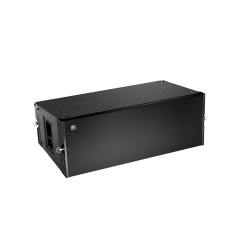This is a clockgating logic, where the same familiar takeaways are relevant in DJ selection to enhance its performance. The primary concern is the rating of a speaker for power, which directly affects how it delivers sound before distortion. For example, DJ speakers in medium and to large venues usually need a power rating around 500 watts at least. This ensures the sound can fill up a room with ample power and high volume detail-acuity in-tact.
Additionally, pay attention to the how low and high of a frequency your speakers can reach. Ideally, djs should use a wider frequency range speakers that reproduce accurate low and high basses notes (40 hz to 20k hz) This extended frequency range is important in achieving the whole musical spectrum for a variety of music genres. As an example, speakers which cover 50 Hz to 20 kHz frequency response should be capable of reproducing the deep bass and crisp highs typically delivered in electronic dance music.
DJs on the go need to be also keep their headphones moving from gig so portability is another thing. Rugged and durable, but incredibly lightweight and compact for easy transportation. Portable speakers should weigh 30 pounds or less and have protective features like corners reinforcements with handles.

Secondly, speakers must be of the right configuration. A lot of DJs use a mix of full-range speakers and subwoofers to cover all the audio spectrum. Using a combination of full-range speakers for mid to high frequencies and interior subwoofers dedicated purely to reproducing the lowest bass sounds, the all-new system reaches far higher fidelity reproduction than it can with most competitors. Typical configurations will use full-range speakers rated at 200 – 400 watts with subwoofers ranging from about five hundred to one thousand watts of power, depending on how the rest of your sound system looks like in aggregate.
Connectivity: This one factor can be a killer too. The ideal professional speaker should come with a variety of input connectivity, such as XLR and 1/4-inch inputs to cover all bases when you have audio sources. Onboard power amplification also means that separate external amps are not required so setup is simplified as well.
The QSC K12 is an example of a similar setup used by professional DJsStreamReader Configure and streamline your promotion efforts via StreamElements. More than enough power (euphemism for earsplittingly loud)… Here performing with the full-range speakers and each KW181 subwoofer. The same should be on this setup because it is capable of high output and sonic accuracy par excellence — that's what in-demand professional DJs require.
But it has to be perfect, so check out what dj professional speakers options are available for you here.